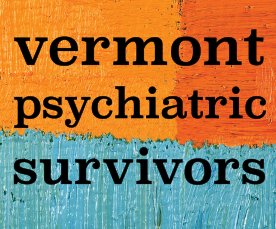Budget Provides Small Increase for Mental Health
The state’s new fiscal year will start on July 1. In its annual appropriations bill, the legislature increased the Medicaid reimbursement rate for Vermont’s community mental health centers by 3%.
In January, Gov. Scott had put forward a recommended budget that would have level-funded the 10 “designated agencies” that provide community-based services on the Vermont Department of Mental Health’s behalf. But Vermont Care Partners, the industry trade group that represents those providers, asked lawmakers in February for a 6.5% raise, which would have supported a 5% salary increase for workers.
In the fall of 2023, DMH recorded 968 unfilled staff positions in the community mental health system, amounting to a vacancy rate around 16%. Vacancies rose dramatically with the start of pandemic in 2020 and peaked at 1,077 in 2022. To help providers attract new employees, the legislature budgeted an 8% rate increase for the community mental health centers that year and a 5% increase in 2023.
Vermont Care Partners warned that an underfunded system could lead to a rise in homelessness, overcrowded emergency departments, and increased need for inpatient psychiatric care. “We can prevent a lot of that if we have a solid workforce on the ground,” said Mary Moulton, the executive director of Washington County Mental Health Services.
Overall, appropriations for DMH increased from $317,528,698 in fiscal year 2024 to $326,334,223 in fiscal year 2025, a 2.77% rise. In March, the department also received an extra $2,576,479 in the annual Budget Adjustment Act in response to its request for help in paying travel nurses at the state-run Vermont Psychiatric Care Hospital. Most of DMH’s budget comes from Medicaid and serves to reimburse its nonprofit contractors, of which Chittenden County’s Howard Center is the largest.
Crisis Response Commission To Review Two Incidents
The Office of the Vermont Attorney General referred five cases last year to the Vermont Mental Health Crisis Response Commission, an 11-member body tasked with investigating fatal and near-fatal police interactions with individuals experiencing mental health emergencies. According to their most recent annual report, commissioners determined, after preliminary reviews, that they would not pursue in-depth inquiries into three of the incidents, but they would continue to examine the other two.
They have not yet submitted their findings.
Created by the state legislature in 2017, the Mental Health Crisis Response Commission includes appointees from Vermont Psychiatric Survivors, Disability Rights Vermont, and NAMI-VT, in addition to members representing state and local police, the Attorney General, and the Vermont Department of Mental Health. In 2019, it investigated the death of Howard Center client Phil Grenon, concluding that “a breakdown in services” precipitated an emergency in which the Burlington Police Department “was compelled to use lethal force.”
The commission’s second full investigation, completed in February of last year, concerned the fatal shooting of a Washington County Mental Health Services client, Mark Johnson, who reportedly had ceased to take his regular medication. Commissioners didn’t fault WCMHS or the Montpelier Police Department, whose “attempts at de-escalation not only followed policy, but were laudable for their extensive attempts at verbal engagement in which officers treated Mr. Johnson in a respectful fashion.” Like Grenon, Johnson had wielded a knife at the time of the shooting.
In 2023, commissioners closed three cases on the basis of insufficient evidence that the incidents had taken place amid mental health crises. For the other two, it had begun by fall to review records from relevant community mental health centers.
Last summer, DMH Care Management Director Allie Nerenberg became the commission’s chair, after Kate Lamphere, the chief clinical services officer at Healthcare and Rehabilitation Services of Southeastern Vermont, stepped down.
Deputy Commissioner Departs
Deputy Commissioner of Mental Health Alison Krompf resigned this spring, taking a new position with a private foundation. Her new employer, the Four Pines Fund, disburses grants for suicide prevention programs.
“I didn’t take this move lightly. I love, love this job,” Krompf said. “It just so happened that an opportunity came my way that’s just directly in the line of my absolute passion, which is helping create the best support possible for people who are experiencing thoughts of suicide.”
Four Pines has “started out by doing a little work in Vermont already, funding different aspects of treatment options,” Krompf continued. “And I say treatment lightly because they’re open to alternative supports outside of the medical model.”
By her account, that includes peer respites. Krompf said she would serve as the foundation’s director of strategy for its Vermont operations.
“The thing I’m probably most excited about is breaking free of the bounds of the Medicaid rules,” she said, “because it just feels like a little bit more of an option to try out some creative ideas.”
Krompf rose to second-in-command at the Vermont Department of Mental Health in 2021, following a two-year stint as its director of quality and accountability. Psychiatric survivor Dan Towle lamented Krompf’s exit, describing her as “a consummate professional and someone who really cares.”
“I’m not delighted that you’re leaving DMH,” Towle told Krompf at a meeting of the Adult Mental Health Standing Committee. “I personally feel you’ve had an impact on DMH, of course, but also on the mental healthcare system and even broader, in terms of the things we’ve been doing with the Mental Health Integration Council and all.”
Krompf reflected on the importance of the committee’s input during her tenure. She noted that its members had, for example, urged DMH to begin publicizing the Pathways Vermont Support Line in its lists of resources for people seeking help, and that it now regularly does so.
“I know that sometimes you don’t always get everybody’s attention as much as you might want,” Krompf said. “But I just deeply want to let you know that your time in this group really makes a difference.”
The Agency of Human Services announced on May 28 that Gov. Scott had appointed Samantha Sweet, DMH’s director of mental health services since 2021, to replace Krompf.
Mental Health Dominates VT Telemedicine
Patients with mental health diagnoses use about 80% of all telehealth services in Vermont, according to a report issued by the Vermont Program for Quality in Health Care.
In accordance with Act 6 of 2021, VPQHC, a nonprofit established by the state legislature, studied the rise of telehealth services during the COVID-19 pandemic, using claims data from Medicaid, Medicare, and the state’s three largest private insurers that spanned 2018 to 2022. VPQHC presented the report to the legislature this February.
In 2019, Vermont insurers processed just 425,958 total telehealth claims, compared to 8,563,939 claims for in-person services. The next year, with the start of the pandemic, the number of telehealth claims rose dramatically to 1,017,134, while in-person services fell, yielding 6,836,483 claims. By 2022, Vermonters had reduced their usage of telehealth somewhat (758,760 claims), but in-person healthcare visits had not returned to previous levels (7,196,266 claims).
Mental health providers of various kinds billed Vermonters for telehealth services 492,656 times in 2022. Mental health counselors topped the list at 142,384, followed by clinical social workers. Outside of the mental health field, Vermonters using telehealth services consulted most often with family medicine physicians, who provided billable services 23,322 times.
Per VPQHC, the vast majority of telehealth providers make use of both audio and video, and the rate of audio-only consultations is lower for mental health than for other services. Women in Vermont use telehealth about twice as often as men. VPQHC did not present data about patient satisfaction for telehealth users, despite language in Act 6 that called for its inclusion in the report.
“More research is needed on the quality of care delivered through telehealth,” said Quality Improvement Specialist Ali Johnson on behalf of VPQH.
In May, the legislature passed S.861, extending a provision from 2020 that had temporarily required insurers to reimburse telehealth consultations at the same rate as in-person services. Now permanent, the rule otherwise would have expired in 2026.
Soteria House to Move to Maple Street
Pathways Vermont has targeted a new location in Burlington for an expansion of its unique Soteria program, which offers a voluntary, nonclinical alternative to psychiatric hospitalization for people experiencing extreme states. If all goes to plan, a 19th-century South End rooming house with eight bedrooms, including two with ADA accessibility, will become a therapeutic residence providing peer support in July 2025.
The Champlain Housing Trust has offered to sell 141 Maple Street for just $250,000, according to Pathways, in spite of its appraised value of $642,700. Spectrum Youth and Family Services previously used the property to operate a group home for homeless teenagers.
The new Soteria House at 141 Maple Street will replace a rented five-bedroom property on Manhattan Drive in Burlington’s Old North End. Pathways cited “an aging building and expensive market leases” as driving factors in the move.
Additional space will be a bonus. “Referrals to Soteria surged by 70% from FY 20 to FY 24, underscoring the pressing demand,” Executive Director Hilary Melton noted in a letter to the Vermont Department of Mental Health.
Last year, the state legislature awarded $1 million to Pathways for the prospective purchase. The nonprofit told DMH that it has privately raised an additional $569,000. An “investment of $1,141,567” from the Vermont Housing and Conservation Board, along with grants totaling $146,657, will cover the rest of the renovation costs.
Serving three extra individuals at a time will also require more operating funds. A budget drafted by Pathways proposed an increase of nearly $1,000,000 in Soteria House’s annual grant from DMH, starting in fiscal year 2026. DMH responded that no such funding is currently available.
Pathways replied that it would expect to open the new facility with just five residents at first. The organization “will collaborate with DMH to identify additional funding to support the increase in capacity to serve eight individuals,” Melton wrote.
Last year, Pathways also announced plans to develop a five-bed “peer respite pilot” in Burlington. Dedicated to person-centered crisis support, peer respites – like Windsor County’s Alyssum, the only one in Vermont so far – tend to offer shorter stays than the Soteria model.
Pathways subsequently posted a recruitment ad for a “peer respite pilot manager.” A spokesperson told Counterpoint this spring that the organization didn’t have “any updates to share at this time” regarding the project.
Inclusive Arts Exhibition Tours State
Inclusive Arts Vermont’s fifth biennial exhibition, CYCLES, opened on Feb. 15 in Burlington at the University of Vermont’s Davis Center. It will travel throughout the state until December.
A nonprofit established in 1986, Inclusive Arts Vermont uses “the magic of the arts to engage the capabilities and enhance the confidence of children and adults with disabilities.” The paintings, photographs, and mixed-media creations in CYCLES express “cycles of nature” and “of the body, mind, and spirit.”
According to Ashley Strobridge, her painting emerged from a period of “cycling through different bipolar meds and through my own bipolar manias and depressions” during her teenage years. Following “a particularly bad mental health crisis brought on by progressive physical decline and medical trauma,” Julien Majonen “turned to pottery as a way to try to get back into the world and find some semblance of feeling okay again.”
After a month at the Vermont State House, CYCLES moved to All Souls Unitarian Univeralist Church in Brattleboro in May. In late summer, it will go to St. Johnsbury before returning to Burlington.

